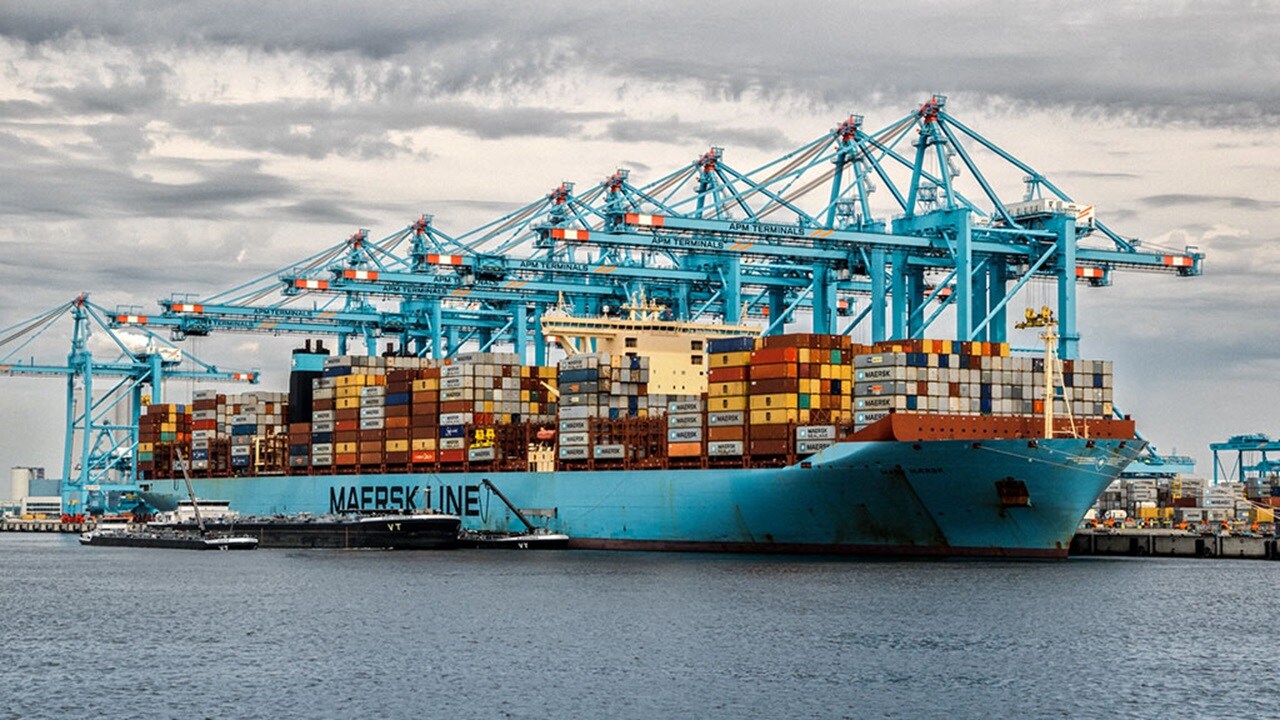As part of our commitment to provide you with the most up-to-date and relevant information on the logistics industry, we share our Market Update on the Latin American market.
You will find information and interesting data on the update of the state of the ports, the most important transport routes and relevant news.
We hope you'll find the following information helpful, as well as inspiring to boost your business and keep your cargo moving.
Topic of the Month: Peak Season in Logistics, Understanding the phenomenon and its implications.
What is peak season?
Every year, all supply chain industries and stakeholders, from raw material sellers, and manufacturers to retailers, prepare for their most profitable part of the year. This period commonly starts globally by the end of August and ends towards the end of November. Yearly, industries get prepared for the holiday season, the part of the year where customer buying conduct intensifies.
This process stresses and tightness all supply chains across industries as it implies a high number of stock movements: summer period clearance, back-to-school, and holiday season purchases. Being prepared and having a clear plan of purchase, inventory, and sale forecast is a game-changer in responding to this phenomenon.
Some alternate factors also influence the typical consumer factors, such as seasonality, country regulatory changes, uncommon disruptions, and weather conditions. It is essential to be prepared and have the visibility and ease to quickly modify the plans so that the cargo gets from the factory to the consumers at the right time.

Are you planning for 2023´s peak season?
Although the economically challenging scenario, are you planning accordingly for the 2023 peak season? It is still unclear the uptick we may see in the market. The past peak seasons have surprised the market, so it is essential to be prepared by having visibility to make any changes in your supply chain so that your cargo arrives on time where it should be for the most anticipated days of the year.
Planning and having several options to make quick shifts has been something we have learned from the ever-changing world of the supply chain, and the consumers behavior during the past three years. Start planning early and being agile have been key to diminishing any cargo disruption.
How to prepare your logistics for the peak season and plan accordingly
As you see, it’s all about being prepared for the unexpected and more than being prepared Here there are some recommendations for succeeding during this period:
Constant communication with your supply chains stakeholders:
Having effective communication with your vendors, and suppliers and partnering up with them is crucial to your overall success during the Peak Season and throughout the year. Working closely with your vendors and partners gives you the possibility to take quick decisions avoiding delays and minimizing disruptions.

Alternatives to move your cargo
It is important to allocate your inventory to an appropriate mode of transport required by your consumers’ conduct. Also, it has the flexibility to make changes when there are specific transportation modes with disruptions. You can make these changes with visibility from your integrator logistic when needed. It is also essential to focus on transportation routing and the diversity of ocean and port routes. Foreseeing different routes to avoid congestion and disruption of your cargo.
Enhance visibility by using technology:
Logistics is all about the visibility of your supply chain to be able to reduce disruptions and know where your cargo is in every step of its process, from its manufacturing to your consumers’ hands.

Considering these key points can help you leverage your performance during this upcoming peak season and have a supply chain running smoothly. Having the right partner to give you visibility and ease during these times is key to keeping your supply chain flowing. By managing all stages of the integrated supply chain’s logistics cycle, an end-to-end services provider can be vital in helping a business access any market. Being resilience is something we have learned since the pandemic. In the article “how logistics can evolve with resilience in 2023,” we explain how logistics have transitioned from “just in time” to “just in case” and how having a partner that impulses resilience is important to navigate during the peak season that is around the corner.
Ocean updates

| Trade lane | Comments | Demand Trend |
|---|---|---|
|
Trade lane
West Coast South America Exports
|
Comments
Reefer fruit slack season coming, and the phenomenon, "El Niño" is already impacting some commodities. Copper prices are under pressure from given concerns about the effect of a global economic slowdown on base metals.
|
Demand Trend
Stable
|
|
Trade lane
West Coast South America Imports
|
Comments
Uncertainty on market seasonality out of Asia as changes in the supply behavior and consumer patterns could affect inventories.
|
Demand Trend
Stable
|
|
Trade lane
East Coast South America to Asia
|
Comments
Japan's agricultural ministry has suspended imports of poultry from the southeastern Brazilian state of Espirito Santo following an outbreak of avian flu there. Other cases were detected in other Brazilian states, but until now no commercial impact, meaning that, exports remain as usual except export to Japan from Espirito Santo state. In Argentina, all exports remain blocked, waiting for 30 days without any new cases.
|
Demand Trend
Stable
|

Main port status
Regarding Latin American ports, waiting times are generally stable. However, there are a few exceptions. Montevideo is experiencing some waiting time due to a recent strike and adverse weather conditions. Additionally, Manzanillo-MX is experiencing waiting times only for XL-sized vessels, and Chilean ports are being closely monitored due to the possibility of bad weather.
In Asian ports, there have been improvements, and no significant waiting times have been reported.
In North Europe, ports are currently operating without major disruptions or significant waiting times.
In South Europe, the ports described in the chart below are experiencing some waiting times due to congestion.For Houston, non-US flagged vessels at Bayport are facing 1-2 days of waiting time due to the high density of arrivals. However, all other vessels have no waiting time.
For Oakland, a Vessel bunching due to ILWU labor actions of June 02nd and still on going.
Port Status
| Less than 1 Day | 1-3 Days | 4 - 7 days | More than 7 days | |
|---|---|---|---|---|
|
Latin America
|
Less than 1 Day
Lazaro Cardenas, Veracruz, Altamira, Progreso, "Guayaquil/ Contecon", "Guayaquil/ TPG", Puerto Bolivar, Callao/ APMT, Callao/ DPW, Pisco, Arica, Iquique - ITI, Mejillones-PAG, Antofagasta-ATI, Valparaiso-TPS, San Vicente - SVTI, San Antonio - STI
|
1-3 Days
Montevideo, Manzanillo-MX, Chile
|
4 - 7 days
|
More than 7 days
|
|
Rest of World
|
Less than 1 Day
Halifax, Jacksonville, Long Beach, Los Angeles, Miami - POMTOC, Montreal, Newark APMT, Newark PNCT, Norfolk, North Charleston, Philadelphia, Port Everglades, Prince Rupert, Seattle, Tampa, Wilmington, Santos 01, Santos BTP, Paranagua, Itapoá, Salvador, Buenos Aires, Manaus, Suape, Pecem, Rio Janeiro, Imbituba, Sepetiba, Itajai, Navegantes, Rio Grande, Zarate, Rosario, Mar del plata, Bahia Blanca, S Antonio Este, P Madryn, P Deseado, Ushuaia, Vitoria, Buenaventura, Santa Marta, Turbo, Moin, La Guaira, Puerto Cabello, Lazaro Cardenas, Veracruz, Altamira, Progreso, Guayaquil/Contecon, Guayaquil/TPG, Puerto Bolivar, Callao/APMT, Callao/DPW, Pisco, Arica, Iquique - ITI, Mejillones-PAG, Antofagasta-ATI, Valparaiso-TPS, San Antonio - STI, San Vicente - SVTI, PSA (SGSIN), SINGAPORE, PORT OF TANJUNG PELEPAS, AUSTRALIA, Tauranga, Auckland, Napier, Lyttelton, Port Chalmers, Timaru, Nelson, Busan New Port Terminal (KRBUSPN), Qingdao Qianwan Container (CNTSTQQ), Shanghai Yangshan Guandong Terminal (CNSGHY3), Shanghai Shang Dong Container Terminal (CNSGHY4), Shanghai East Container Terminal (CNSGHCT), Ningbo Beilun Container Terminal Phase 4 (CNNPOJ4), Xiamen Songyu Terminal (CNXIMSY), Yantian Container Terminal (CNYATCT), Hongkong Modern Terminal (HKHKGMO).
|
1-3 Days
Baltimore, Charleston, Freeport, Houston, Mobile, New Orleans, Savannah, Vancouver, Montevideo, Manzanillo-MX, PATRICK (BNE), PATRICK (FRE), PATRICK (MEL), PATRICK (SYD), DPW (MEL), DPW (SYD), DPW (BNE), DPW (FRE), MEL VICT, ADL, AMBARLI MARPORT, AMBARLI KUMPORT, POTI.
|
4 - 7 days
Oakland
|
More than 7 days
MERSIN
|

Landside updates
East Coast South America Area
BRAZIL:
- We started new operations in Brazil with Electrolux (FTL) in Manaus and GM (FCL) in Santos;
- In Itapoá, we are preparing to start the operation of vehicles (FCL Port x Customer's Plant and FTL, LTL Airport x Customer's Plant);
- An electric vehicle trial is being implemented in Cajamar site (FLT and LTL).

Air updates
East Coast South America
ESA market is currently on a low season. There aren't constraints on the outbound flows to any destinations. Bookings are being made without issues at the moment.
The new customs system for Brazil (CCT) should go live on August 2nd. The new platform will reduce current bureaucracy and should speed up import and export clearance flows.

Highlights
Unifying as the Maersk brand: new information on the transition
We are on a journey to unite Sealand Europe and Sealand Americas with the Maersk brand, and in the coming months we will begin servicing you as Maersk. Our new setup will allow us to bring more ease, efficiency, and expertise to your supply chain.

How to drive efficiency with LCL
Deliver your Less-than-Container Load (LCL) cargo on time and in a cost-effective manner.
Learn more from the global Maersk team
Learn what’s happening in our regions by reading our Market Updates by region.
Europe
North America
Asia Pacific
Be sure to visit our “Insights” pages where we explore the latest trends in supply chain digitization, decarbonisation, growth, resilience, and integrated logistics.
无论您需要什么,我们都可以随时为您提供帮助
I agree to receive logistics related news and marketing updates by email, phone, messaging services (e.g. WhatsApp) and other digital platforms, including but not limited to social media (e.g., LinkedIn) from A. P. Moller-Maersk and its affiliated companies (see latest company overview). I understand that I can opt out of such Maersk communications at any time by clicking the unsubscribe link. To see how we use your personal data, please read our Privacy Notification.
By completing this form, you confirm that you agree to the use of your personal data by Maersk as described in our Privacy Notification.
